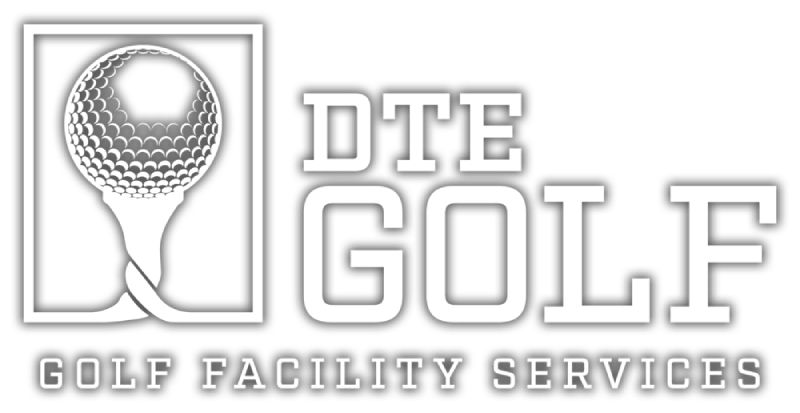Don’t Get Irritated, Get Irrigated: Your Golf Course Irrigation Guide
If you’ve ever stepped foot on a golf course and said, “Wow,” you’ve seen the payoff from a properly maintained irrigation system. Since a golf course is defined almost entirely by its green grass, it better be in tip-top condition if you expect players to be impressed. The way golf course turf is irrigated, and with what frequency are some of the most important concerns to the superintendent or maintenance operator.
Irrigation not only impacts the health of your turf but the quality of your game. Both the Greens and the Fairways rely on moist, healthy blades of grass, which provide resistance to the golf ball. Without proper irrigation, even the most determined golfer wouldn’t enjoy their game.
Golf Course Irrigation: The Basics
The average 18-hole golf course pumps 2,000 gallons of water a minute. That means your water bill at the golf course is probably a little more than your one at home (hopefully). Every course is different and will require a unique approach, but here are some of the main components seen in golf course irrigation systems.
Lakes, Canals, Ponds, etc.
The Pumping Station
The Valves and Pumps of the Water Distribution System
The Controlling Valves
Generally installed in automatic irrigation systems which fuel them and are entirely satellite-based or stand-alone which release water into valves.
The Control Lines
These funnel the water flow into the sprinklers.
The Sprinkler Heads
Out of the many kinds of rotary and pop-up heads used by golf courses to give them a 360-degree turn.
Fertigation
This is a chemical that is injected into the irrigation system so it can be spread and absorbed by turf along with the water.
The Perfect Time for Golf Course Irrigation
You’ll find that most superintendents irrigate the golf course early in the morning before the sun comes up. As the day gets later, the rising sun heats leftover water and evaporates it before it can be absorbed. The wind flow also increases, hampering the uniformity of the water through sprinklers. Of course, it is also optimal to irrigate when there are no golfers on the course, as most don’t ask for their game with a shower.
Your irrigation schedule should be intimately informed by climate and weather. Depending on your climate, and the season you’re in, irrigation timing and method may have to change, possibly on a seasonal basis. Make sure your course maintenance is being changed often to account for everyday differences in circumstances. Just because you have an irrigation schedule that works doesn’t mean it will work every year.
Even more important is to recognize when the old irrigation system has got to go. An older or obsolete irrigation system is one of the most common issues a golf course faces, and typically, they face away from it. Concerned with costs and the time needed for installation, most courses have made do with faulty irrigation systems, and by made do, we mean made a mess.
Golf Course Irrigation System Quality Check
If you aren’t sure about your irrigation system, you can perform a quality check to see if it may be time to replace the system entirely or maybe gets some repairs.
Check the positioning of the present sprinklers and take note of the coverage area and the uniformity in the water application. Less spread over less turf makes it more necessary for better heads and water pressure.
Investigate your pumping station and water sources for longevity. If you already have issues with pressure and water source, you'll need to reconsider the source of your irrigation water.
Look at previous repairs. If you don’t have this or are newer to the course, whoever handles financials should be able to provide recent repair costs going back five years. Use this to see what parts are becoming more and more unstable.
Older irrigation systems may seem to work well enough, but pale in comparison to modern digitized irrigation systems. Digital irrigation systems can adjust automatically to changes in weather, sense leaks and perform emergency shutoffs, and connect to the cloud so you can control them from anywhere.
A newer system may come with higher installation costs, but the value is in efficiency. Not only do these updated systems carry technological benefits, but economic ones as well. With significantly less of your water being wasted to broken sprinkler heads or improper drainage, you can now make sure that you are using the exact amount of water, drop for drop, that is needed for your course, nothing more, nothing less. This saves you on one of your biggest costs, the water bill, and saves your water supply from being depleted faster.
Irrigation systems are one of the most complicated components of a golf course, and sometimes that means even the superintendent isn’t 100% confident managing or inspecting it alone. If you need a second opinion, try to stray away from installation companies that may be seeking to sell you a new system. A golf facility services company can provide a free evaluation and create a plan that shows you what changes, if any, you need to make to optimize your irrigation practices. DTE Golf® has golf consulting, maintenance, and management professionals standing by, ready to answer your questions, meet you in person, and tour your course, all for free.
Contact us today.



